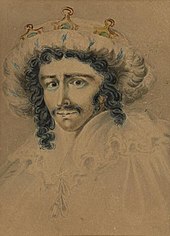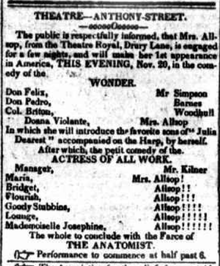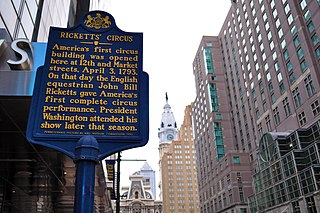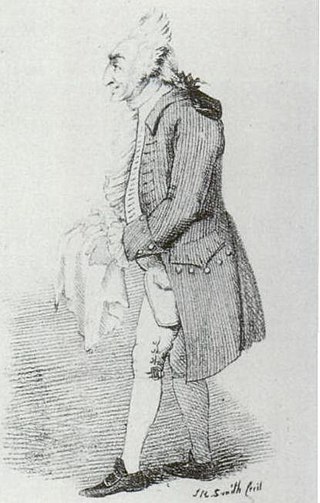The Anthony Street Theatre was an early New York City theatre which operated intermittently from 1812 to 1821. It opened as the Olympic Theatre in May 1812 and had multiple names during its brief existence.
Contents




The Anthony Street Theatre was an early New York City theatre which operated intermittently from 1812 to 1821. It opened as the Olympic Theatre in May 1812 and had multiple names during its brief existence.




The theatre was converted from a circus building used by Pepin and Breschard and located at 79-85 Anthony Street (which is now Worth Street) in Manhattan. (The circus appears to have relocated to Broadway at the corner of White Street. [1] However, there is much confusion among old sources between these two locations.) The first serious competition to the Park Theatre, the venue opened on May 22, 1812, managed by John Dwyer and Donald McKenzie as the Olympic Theatre. The first performance was The Way to Get Married , followed by "grand feats of horsemanship by Mr. Breschard and Company", and a farce called The Spoild Child. [2] [3] [4]
By July 1812 the theatre came under the management of actor-manager William Twaits, along with Alexander Placide (but who died on July 26) and Breschard (who was still managing the horses); [5] Twaits and Placide had come to New York after the disastrous Richmond Theatre fire in Richmond, Virginia, where they had been co-managers. Under Twaits, the Olympic was due to open with a production led by Charlotte Melmoth and Twaits, but while travelling to fulfil this engagement Melmoth was involved in a carriage accident, resulting in a severe fracture to her arm that failed to heal, forcing her to give up her acting career. [6] [7] Circus acts continued to appear here as well. [8] The popular equestrian drama Timour the Tartar debuted in America at the Olympic in September 1812. [5]
The theatre was renovated and redecorated in 1813 when it was named the Anthony Street Theatre, the Commonwealth Theatre in 1814, and the Pavilion Theatre in 1816, before reverting to the Anthony Street Theatre name in 1820. [9]
During the 1820–1821 season, the theatre was the home of the acting company of the Park Theatre while their own theatre was being rebuilt after having burnt down.
With this company Edmund Kean made his first appearance to much acclaim in New York in November 1820 in Richard III . [9] Of Kean's performance, manager Edmund Simpson wrote, "Kean is with us and playing to great business, he averages about $1,000 a night. The people don't know exactly what to make of him. His strange manner surprises them, but his style gains more converts every night and before he leaves us I expect they will be unanimous in calling him, as they express it, the greatest creation they ever saw." [10]
Virginius by James Sheridan Knowles was first performed in America at the theatre on September 25, 1820. [11] Henry John Wallack had his New York debut at the theatre in the role of Young Norval on May 9, 1821. [12] The season wrapped on July 6, 1821, with a benefit for Mr. Moreland, a performance of Douglas and Falls of Clyde . [13]
The theatre was demolished in 1821 shortly after the Park Theatre company left, and the plot was bought for the Christ Episcopal Church. [12] [8] [14] [11]

Edmund Kean was a British Shakespearean actor, who performed, among other places, in London, Belfast, New York, Quebec, and Paris. He was known for his short stature, tumultuous personal life, and controversial divorce.

William Charles Macready was an English stage actor. The son of Irish actor-manager William Macready the Elder he emerged as a leading West End performer during the Regency era.

Charles Robert Maturin, also known as C. R. Maturin, was an Irish Protestant clergyman and a writer of Gothic plays and novels. His best known work is the novel Melmoth the Wanderer, published in 1820.

Walnut Street Theatre, founded in 1808 at 825 Walnut Street, on the corner of S. 9th Street in the Washington Square West neighborhood of Philadelphia, is the oldest operating theatre in the United States.

The equestrian theatre company of Pépin and Breschard, American Victor Pépin and Frenchman Jean Baptiste Casmiere Breschard, arrived in the United States from Madrid, Spain, in November 1807. They toured that new country until 1815. From their arrival until the present day, what is now known as the traditional circus has had a presence in North America.
Jean Baptiste Casmiere Breschard was a circus owner and equestrian performer in the Circus of Pepin and Breschard.

John Bill Ricketts (1769–1802) was an English equestrian who brought the first modern circus to the United States.

Hippodrama, horse drama, or equestrian drama is a genre of theatrical show blending circus horsemanship display with popular melodrama theatre.
John Cooper (1793–1870), was a British actor active between 1811 and 1859, who played in "a singularly large number of parts, some of them of leading importance" in many locations in England, Wales and Scotland.
Washington Gardens was a place of public entertainment and refreshment in early 19th-century Boston, Massachusetts. Also known as Vauxhall, it specialized in fireworks, circuses, musical and theatrical performances, pictorial exhibitions, and the occasional balloonist and necromancer. John H. Schaffer oversaw the enterprise beginning in 1814.

Mrs Charlotte Melmoth was an 18th-century English actress, the estranged spouse of British actor/writer Samuel Jackson Pratt, and known as "The Grande Dame of Tragedy on the Early American Stage". After a moderately successful stage career in Great Britain and Ireland, she emigrated to the United States of America in 1793 and became one of the best-known actresses of the late 18th/early 19th century.

John Street Theatre, situated at 15–21 John Street, sometimes called "The Birthplace of American Theatre", was the first permanent theatre in the Financial District of Manhattan, New York. It opened on December 7, 1767, and was operated for several decades by the American Company. It closed on January 13, 1798.

The Broadway Theatre, called the Old Broadway Theatre since its demise, was at 326–30 Broadway, between Pearl and Anthony Streets in Lower Manhattan, New York City. With over 4000 seats, it was the largest theater ever built in New York when it opened. During its brief existence, many prominent performers of the era appeared on its stage. It presented plays, opera, ballet, hippodrama, and circus performances in a space that was reconfigured several times. The operators always struggled to make money, however, and after twelve years the Broadway Theatre was replaced by a more profitable building, for the textile trade.

Town and Country, or Which is Best? is an 1807 play by English playwright Thomas Morton. It was regularly performed in England and America during the 19th century.
Charleston Theatre, also called Broad Street Theatre was a theatre in Charleston, South Carolina between 1794 and 1833. It was the first permanent theatre in Charleston, the first with a permanent staff, and the only theater for much of its duration. It was succeeded by the New Charleston Theatre (1837–1861).
Alexander Placide (1750–1812), was an American actor and theatre manager. He debuted in France in 1770 and was active in Saint-Domingue until the Haitian Revolution, when he emigrated to the United States. He managed the Charleston Theatre from 1796 and was the leader of the Charleston Company, which also toured Georgia and Virginia and are considered to have introduced a permanent theatre in these states. In 1812 he became a co-manager with William Twaits and Jean Baptiste Casmiere Breschard of the Olympic Theatre in New York.

Olympic Theatre was the name of five former 19th and early 20th-century theatres on Broadway in Manhattan and in Brooklyn, New York.

William Twaits was a British singer, dancer and actor-manager whose career was mostly in the United States in the early 19th-century.

Timour the Tartar is an 1811 hippodrama play by English dramatist Matthew Lewis. The equestrian drama was a popular success.
Laurence Clinch was an Irish actor, familiarly known as Larry, and accomplished in both tragedy and comedy. The popular farce St Patrick's Day was written and performed to showcase his particular talent.